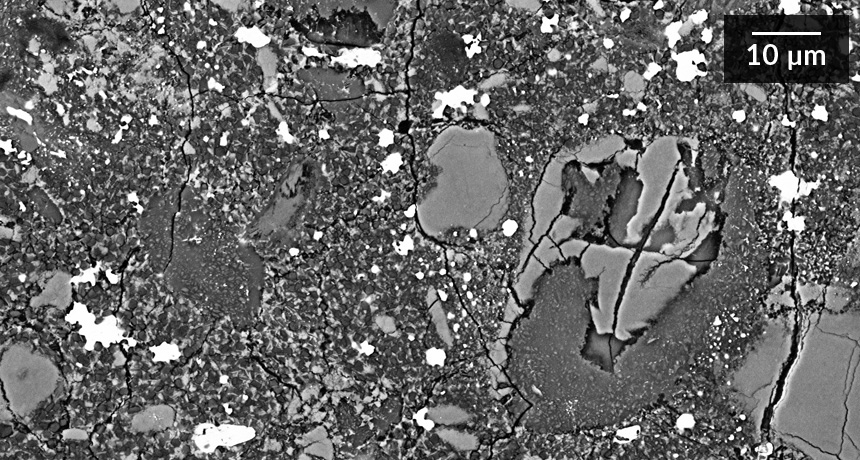Earth’s most common mineral finally gets a name
Bridgmanite, long sought, now found — in an 1879 meteorite

Part of this sample of a meteorite that crashed into Australia 135 years ago contains bridgmanite. This newly named material also is the most common mineral on Earth.
O. Tschauner et al/Science 2014







